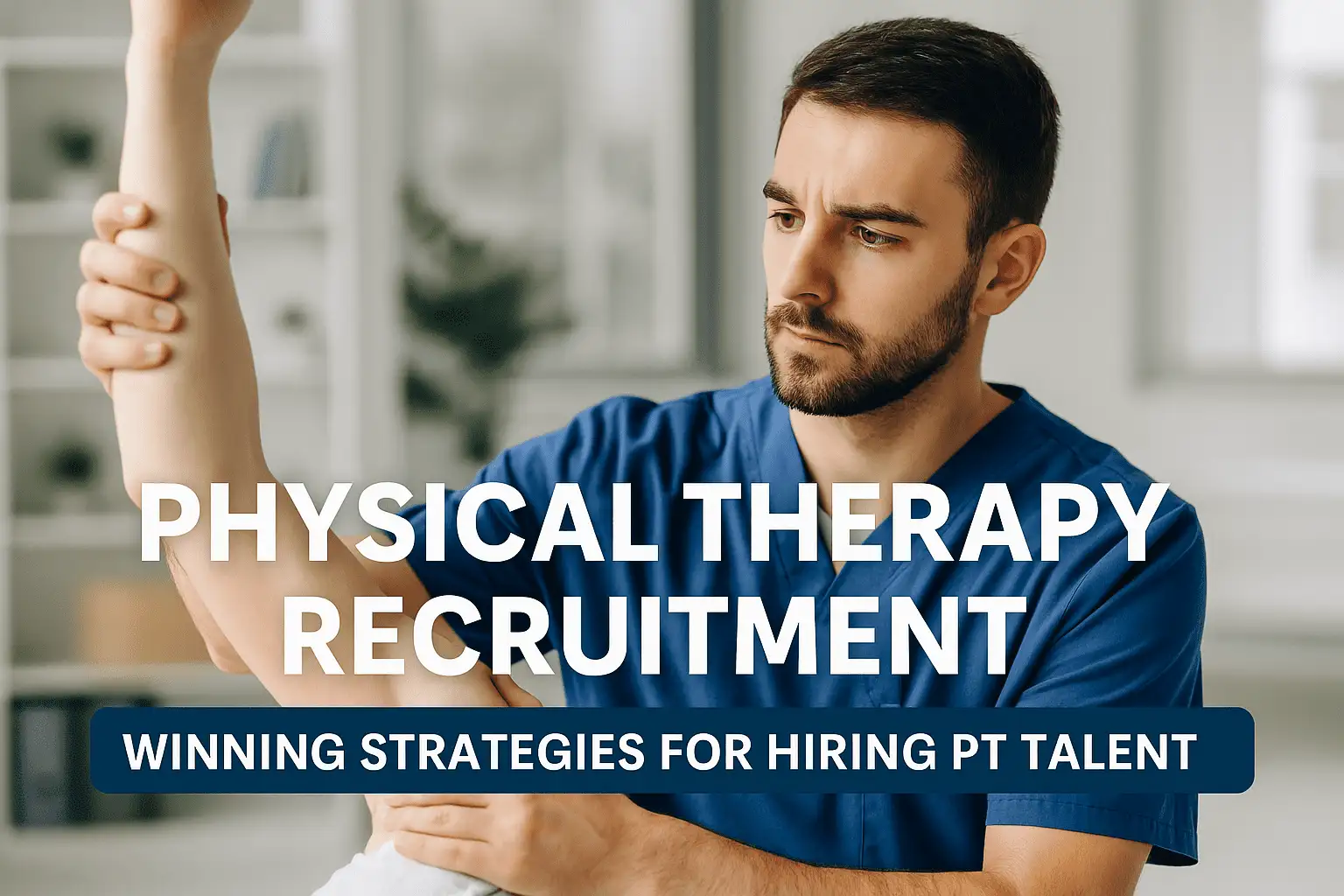Effective Strategies for Recruiting Passive Candidates: Optimize Your Approach
In today’s highly competitive job market, practical strategies for recruiting passive candidates are essential to optimize your approach. Passive candidates can be a valuable source of top talent that may not actively seek new opportunities but would consider the right offer. By exploring the advantages of recruiting passive candidates, such as broader talent pool access and cost savings, this blog post will provide insight into effective strategies to maximize your approach.
We’ll begin by understanding the benefits of recruiting passive candidates, such as increased talent pool access and cost savings. Next, we’ll discuss identifying your ideal candidate profile based on qualifications, skillset, cultural fit, and location considerations.
Furthermore, we will utilize social media platforms like LinkedIn, Twitter, and Facebook to reach out to passive candidates effectively. We will also cover leveraging professional networks and referrals through networking events or employee referral programs.
Lastly, our discussion on effective strategies for recruiting passive candidates will touch upon using executive search firms in sourcing these high-quality talents while optimizing your partnership with them for maximum results.
1. Understand the Benefits of Recruiting Passive Candidates
Recruiting passive candidates can offer a range of benefits to businesses looking to optimize their recruitment strategies and maximize their return on investment. This section will explore three critical advantages of targeting passive candidates: increased talent pool, access to top talent, and cost savings.
a. Increased Talent Pool
Focusing on passive candidates allows you to tap into a much larger talent pool than if you were only considering active job seekers. According to LinkedIn data, approximately 70% of the global workforce consists of passive candidates who are not actively searching for new opportunities but may be open to them if approached with an attractive offer. By reaching out to passive job seekers, you open up a wider range of potential candidates and may be able to locate the ideal individual for your team.
b. Access to Top Talent
Many high-performing professionals fall into the category of passive candidates because they are satisfied with their current roles and do not feel compelled to seek new opportunities actively. However, that does not mean they would not consider moving if presented with an enticing proposition from another company or industry leader like Engaged Headhunters. Targeting these individuals gives you access to some of the best talent available in your field while also providing an opportunity for growth within your team by bringing fresh perspectives and expertise onboard.
c. Cost Savings
- Reduced time-to-hire: By focusing on passive candidates who already possess the skills and experience you require, you can significantly reduce the time it takes to fill a vacant position. This saves your organization valuable resources and minimizes disruption caused by prolonged vacancies.
- Lower recruitment costs: Passive candidates are often more likely to accept an offer if it suits their needs and career aspirations. By attempting to comprehend what drives these people, companies can make offers that are more probable to be taken, thereby reducing the requirement for costly ad campaigns or multiple interviewing rounds.
Incorporating passive candidate recruitment into your overall hiring strategy can yield significant benefits for your business in terms of both talent acquisition and cost savings. To optimize this approach further, consider partnering with a reputable executive search firm like Engaged Headhunters, which specialize in connecting organizations with top-tier professionals across various industries.
Gaining the upper hand in hiring by seeking out passive job seekers can be advantageous, yet it is imperative to comprehend the advantages of this method before commencing a hunt. Identifying an ideal candidate profile is key for successful recruitment; understanding qualifications, skillset, cultural fit, and location considerations are critical in finding the right hire.
2. Identify Your Ideal Candidate Profile
Creating an ideal candidate profile is crucial for optimizing your approach to recruiting passive candidates. This involves considering qualifications and skillset, cultural fit, and location considerations that should be considered when searching for potential hires. Having a clear notion of the kind of individual you’re seeking can make your recruitment procedure more efficient and increase the chances of finding outstanding personnel.
a. Qualifications and Skillset
Determining the qualifications and skills required for a role will help you target passive candidates with these attributes. Start by listing essential skills needed to perform well in the position, such as technical expertise or industry knowledge. Additionally, consider any desired soft skills like communication abilities or leadership qualities that would contribute to success within your organization.
You may also want to research industry-specific competency models which outline key competencies necessary for various roles in different industries.
b. Cultural Fit
Finding candidates who align with your company’s culture is just as important as identifying those with relevant qualifications and skill sets. A strong cultural fit ensures new employees are more likely to stay engaged, collaborate effectively with their colleagues, and contribute positively towards achieving organizational goals.
- Define your company values: Clearly articulate what makes up your organization’s culture so you can identify passive candidates who share similar beliefs.
- Evaluate past successes: Look at previous successful hires within your organization – what characteristics did they have that made them thrive?
- Incorporate behavioral assessments: Utilize tools like Predictive Index to assess a candidate’s personality traits and determine if they align with your company culture.
c. Location Considerations
When identifying passive candidates, it’s essential to consider location factors that may impact their interest in pursuing new opportunities. For example, some individuals may be more open to relocating for the right opportunity while others might prefer remote work arrangements or positions within commuting distance of their current residence.
To optimize your approach:
- Determine geographic preferences: Determine regions where you will most likely find qualified candidates based on industry trends and labor market data.
- Incorporate flexible work options: Offering remote or hybrid work arrangements can broaden your talent pool by attracting passive candidates who value flexibility in their professional lives.
- Leverage local networks: Connect with professionals within targeted locations through networking events, conferences, or online platforms like LinkedIn Groups focused on specific industries or regions.
Once you have identified the ideal candidate profile for your position, it is time to start looking for potential passive candidates. Exploring social media can be a successful technique for contacting prospective passive applicants.
3. Utilize Social Media Platforms to Reach Out to Passive Candidates
In today’s digital age, social media platforms have become essential for businesses looking to connect with passive candidates. By using the potential offered by LinkedIn, Twitter, and Facebook, employers can access a broad range of candidates who may not be actively seeking job opportunities but could be open to considering them if approached appropriately.
a. LinkedIn Strategies for Connecting with Passive Candidates
LinkedIn is a professional networking platform that allows users to showcase their skills and experiences while connecting with other professionals in their industry. To optimize your approach on this platform:
- Create a strong company profile: Ensure your business has an up-to-date and informative company page highlighting its mission, values, culture, and job openings.
- Utilize advanced search features: Use filters such as location, industry expertise, or specific skill sets when searching for potential candidates.
- Engage in relevant groups: Joining industry-specific groups will help you stay informed about trends and news while providing access to like-minded professionals interested in joining your team.
- Send personalized connection requests: When reaching out to passive candidates on LinkedIn, tailor each message according to the recipient’s background or interests rather than sending generic templates.
b. Twitter Strategies for Connecting with Passive Candidates
Twitter, although less focused on professional networking compared to LinkedIn, still offers valuable opportunities for connecting with passive candidates through its real-time communication capabilities:
- Frequent updates about job openings: Regularly tweet about current openings and use relevant hashtags to increase visibility.
- Engage with industry influencers: Follow and interact with thought leaders in your field, as they may have followers who could be potential candidates for your business.
- Monitor conversations using advanced search features: Keep an eye on discussions related to your industry or specific skills you are looking for by utilizing Twitter’s advanced search options.
c. Facebook Strategies for Connecting with Passive Candidates
Facebook, while primarily a platform for personal connections, can still offer opportunities to connect with passive candidates:
- Create a company page: Like LinkedIn, ensure your business has an exciting and informative company page where users can learn about the organization’s culture, values, and open positions.
- Utilize Facebook groups: Joining relevant professional groups will allow you access to individuals with similar interests or backgrounds and provide another avenue to post job openings.
- Promote employee-generated content: Encourage employees to share their experiences working at the company on their personal profiles. This authentic content helps build employer brands and increases the likelihood of attracting passive candidates within their networks.
Social media platforms are an effective way to reach out to passive candidates and can help you expand your network of potential hires. Leveraging professional networks and referrals is another powerful strategy for finding the right candidate for your team.
4. Leverage Professional Networks and Referrals to Find Passive Candidates
In today’s competitive job market, businesses need to tap into alternative sources of talent beyond traditional recruitment channels. One effective way to do this is by leveraging professional networks and referrals from existing employees or industry connections. This approach can help you access a wider pool of passive candidates who may not actively seek new opportunities but could be open to considering them if approached correctly.
a. Networking Events and Conferences
Attending networking events and conferences relevant to your industry can provide an excellent opportunity for meeting potential passive candidates face-to-face. Attending such events offers the chance to interact with individuals already invested in the same area, allowing you to quickly spot potential passive candidates who could be a good fit for your organization.
- Research: Before attending any event, research the attendees’ list (if available) and identify individuals whose background aligns with your ideal candidate profile.
- Mingle: During the event, ensure you mingle with as many people as possible while building genuine relationships rather than just collecting business cards.
- Follow up: After the event, follow up with any promising contacts via email or social media platforms like LinkedIn – remember that nurturing these relationships over time can lead to valuable introductions or even direct referrals down the line.
b. Employee Referral Programs
An employee referral program is another effective way to source passive candidates. Incentivize your staff to recommend their acquaintances, relatives, or ex-colleagues for open jobs in the company by offering rewards – this can give you access to a group of prospects that may be hard to get through other recruitment methods.
Here are some tips on how to create an effective employee referral program:
- Communicate: Communicate the details of the referral program and its benefits to all employees – make sure they understand how it works and what’s in it for them.
- Incentivize: Offer attractive incentives (e.g., cash bonuses, extra vacation days) for successful referrals – this will encourage more employees to participate actively in the process.
- Simplify: Make the referral process as simple as possible by providing easy-to-use tools (e.g., online forms) that allow employees to submit candidate information quickly and efficiently.
- Acknowledge: Recognize and reward those who contribute valuable referrals – even if a referred candidate isn’t hired immediately, acknowledging their efforts can help maintain engagement with the program over time.
Leveraging professional networks and referrals allows businesses access top talent and individuals pre-vetted by trusted sources. This approach significantly increases your chances of finding high-quality passive candidates who will likely succeed within your organization once onboarded. Building strong relationships with industry professionals takes time; however, investing in these connections now will pay off when you need new talent.
Leveraging professional networks and referrals can be an effective way to source passive candidates; however, it is essential to remember that this approach requires time and effort. By utilizing executive search firms, businesses can streamline finding qualified passive candidates more efficiently.
5. Utilize Executive Search Firms to Source Passive Candidates
In this competitive job market, businesses often struggle to find top talent through traditional recruitment methods. Partnering with an executive search firm can be a game-changer when it comes to sourcing passive candidates who may not actively be looking for new opportunities but are open to considering them if the right offer comes along.
a. Understanding the Benefits of Working with an Executive Search Firm
- Expertise: Executive search firms have extensive knowledge and experience in identifying and recruiting passive candidates within specific industries or sectors, ensuring that you get access to the best possible talent pool.
- Dedicated resources: These firms dedicate their time and resources solely to finding high-quality passive candidates for your business, allowing your internal team to focus on other essential tasks.
- Better results: With their vast networks and connections, executive search firms can reach out directly to potential candidates who might not respond positively or even notice generic job postings or company outreach efforts.
- Faster hiring process: By leveraging their expertise in candidate identification and engagement strategies, executive search firms can significantly shorten the hiring timeline compared to traditional recruitment methods.
b. Finding the Right Executive Search Firm for Your Needs
Select an executive search firm compatible with your objectives and criteria for the best possible outcome. Here are some factors to consider when choosing an executive search firm:
- Industry specialization: Look for a firm that specializes in your industry or sector, as they will better understand the market dynamics and candidate pool.
- Reputation: Research the importance of potential firms by checking client testimonials and online reviews and asking for referrals from trusted sources within your network.
- Fees and payment structure: Understand how the firm charges its fees (retainer-based vs. contingency-based) and ensure its payment structure aligns with your budgetary constraints.
c. Optimizing Your Partnership with an Executive Search Firm
To get the most out of your partnership with an executive search firm, it’s essential to maintain open communication lines throughout the recruitment process. Here are some tips on optimizing this collaboration:
- Create a clear job description detailing key responsibilities, qualifications, skills required, and company culture fit aspects – this will help guide their efforts in finding suitable passive candidates more effectively.
- Maintain regular check-ins with the assigned consultant or team working on your project to stay updated on progress toward sourcing potential hires while providing feedback where necessary.
FAQs in Relation to Effective Strategies for Recruiting Passive Candidates: Optimizing Your Approach
What sourcing strategies do you use to recruit passive candidates?
We use a variety of sourcing strategies to recruit passive candidates, including leveraging our extensive network of industry contacts and utilizing job boards, social media platforms, referrals from existing clients or employees, alumni networks, and specialized recruitment events. Additionally, we leverage data-driven insights to identify the right talent for each role. Our experienced recruiters strive to identify and source the best fit for each role quickly and efficiently while ensuring all applicants possess the necessary skillset.
How do you recruit passive employees?
Passive employee recruitment requires a different approach than active candidate searches. It involves creating relationships with potential candidates, networking, and leveraging connections to identify qualified individuals who may not be actively searching for a new job. This includes using social media networks such as LinkedIn, attending industry events, engaging in targeted advertising campaigns, and utilizing executive search firms specializing in passive recruiting strategies. Businesses can gain access to top-notch talent by investing in the development of connections with possible hires before them becoming available on the job market.
1. Networking:
Establishing relationships with potential candidates through professional networks and industry contacts.
2. Advertising:
Utilizing various media outlets to attract qualified applicants for job openings.
3. Referrals:
Leveraging existing employee connections to identify suitable candidates for open positions in the organization.
4. Recruiting Events:
Attending or hosting events that bring together employers and prospective employees, such as career fairs or meetups focused on specific industries or roles.
5 Headhunting/Executive Search Firms:
Partnering with an experienced recruitment firm to source top-level talent who may not be actively looking for a new role but could be interested in a great opportunity when presented with one
How do you approach a passive candidate?
Passive candidates may not actively search for a job but would still consider the right opportunity. Establishing a connection with passive candidates by attending networking events or utilizing online platforms such as LinkedIn can help to demonstrate an understanding of their objectives and interests. This can be done through networking events or online channels such as LinkedIn. Once contact has been established, it is essential to communicate the role’s responsibilities and benefits to attract their attention. Finally, always follow up promptly after initial communication so they don’t forget about your offer.
Conclusion
By utilizing the effective strategies for recruiting passive candidates outlined above, you can optimize your approach and maximize your chances of finding top-tier talent. Using social media platforms to reach out to potential candidates, leveraging professional networks and referrals, and working with executive search firms are all great ways to find high-quality passive candidates. Putting in the effort and commitment can help you construct a stellar team that will assist your company in reaching new heights.






